Difference between revisions of "Msc1G5:Group"
Serban Bodea (Talk | contribs) |
|||
| Line 18: | Line 18: | ||
<div style="float:left; width: 158px; height 30px; border: 1px solid #aaa; margin-right:10px" align="center"> | <div style="float:left; width: 158px; height 30px; border: 1px solid #aaa; margin-right:10px" align="center"> | ||
[[Msc1G5:Student4|'''Design & User Experience''']] | [[Msc1G5:Student4|'''Design & User Experience''']] | ||
| + | </div> | ||
| + | <div style="float:left; width: 158px; height 30px; border: 1px solid #aaa; margin-right:10px" align="center"> | ||
| + | [[Msc1G5:Student4|'''for 04Dec Tutorial''']] | ||
</div> | </div> | ||
</div> | </div> | ||
Revision as of 11:43, 4 December 2015
Concept
MIND MAPPING
MANIFESTO
THEME: WATER
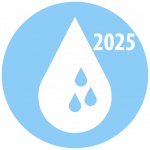
Water is the most efficient element of life. We use water not only for drinking but for agriculture, farming, manufacturing etc. The water crisis is the number one global risk on impact to society as a measure of devastation. In the near future, water sanitation and scarcity will become the global crisis, as freshwater resources that we can access could not keep up with the demand of the water consumption. Currently, ⅘ of the world population do not have access to clean water. With a billion more people to feed by 2025 and increasing industrialization, nature itself can no longer regenerate itself. Natural water, from river, lake, and ocean, has been contaminated by human activities. What if we could be able to help accelerate the natural water filtration process? As a result, improving the current condition of those living in poverty with contaminated water and transforming water resources in nature to be potable water in order provide a solution for future water scarcity in the next ten years.
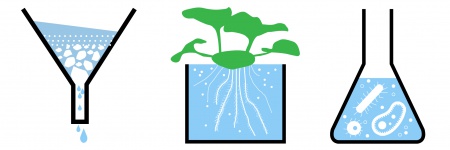
Rotterdam has a long history with water.The city brings the innovation of how to dwell with water, since the windmill, to dry the land and remove water to the sea, to the Rotterdam water barrier, to block the storm and water from the North Sea. In 2025, Rotterdam will host the World Expo under the theme “Changing Currents” dealing with deltas in transition.The expo positioned in the heart of the waterways, ports, and canals. Rotterdam will be a perfect location as we can use existing water sources in our design
THE HYDRO-BODY PAVILLION
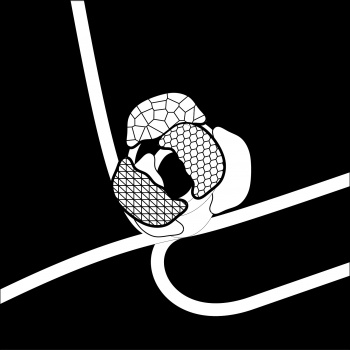
The Hydro-Body Pavilion will serve as a mechanism body to purify water as well as a didactic role model of future passive sustainable water treatment and uses. The design strategy will focus on specifically on natural purification technique, filtration involving: sand, charcoal, bacteria and plant filter. Each material’s characteristic will fully explore, and will influence the design process and spatial quality in Hydro-body.People are walking into the pavilion as if they are a part of a cell entering a host body, they will have opportunities to interact with the process of water purification. The interior of space will convey the experience of entering an active organism organ, with blood and vein running through its body.
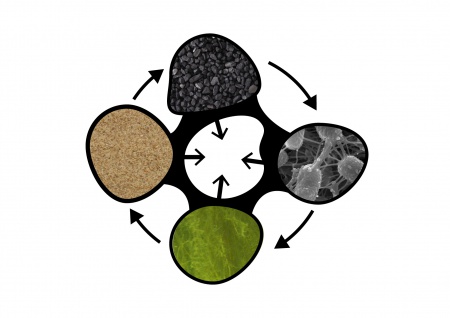
The Pavilion as a whole is one living organism that could communicate within itself. It is a body with veins, running with pipes through the pavilion. The design aims to create a pavilion that will integrate building components: floor, wall, column, ceiling with building services such as water pipe, lighting, and ventilation system. The program and space will be divided according to the layer of filtrations: bacteria, plant, sand, and charcoal. The pipes allow them to communicate with each other.

The strategy inspired by the work of Rachel Armstrong,”Protocell architecture”. What we very inspired by the notion of living material that is self-maintaining, self-reproduce and potentially evolve. Protocell architecture is not an imitation of nature or Bio-mimic of nature. The concept of protocell in architecture is similar to the way plant produce its fruit.The approach using the bottom-up construction technique. One of the examples of the Venice by Christian Kerrigan. The project used limestone to repair parts of a city that are damaged by water, by using ecological process. The limestone gradually strengthen the structure of the waterfront wooden piles and potentially grow a limestone reef underneath the city

.
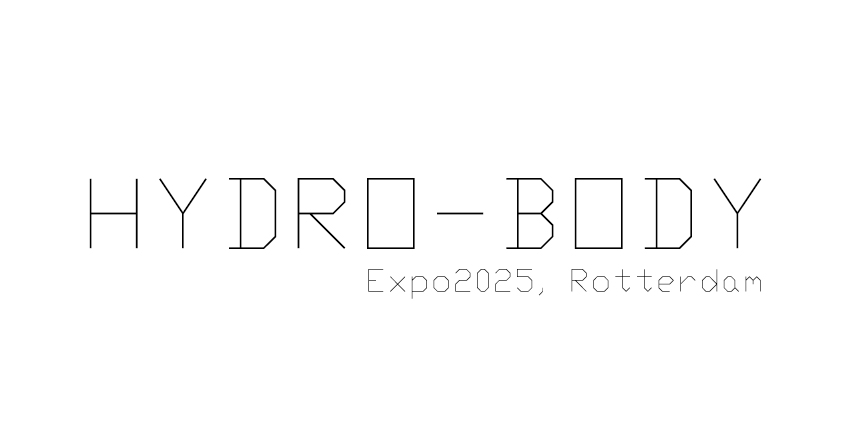
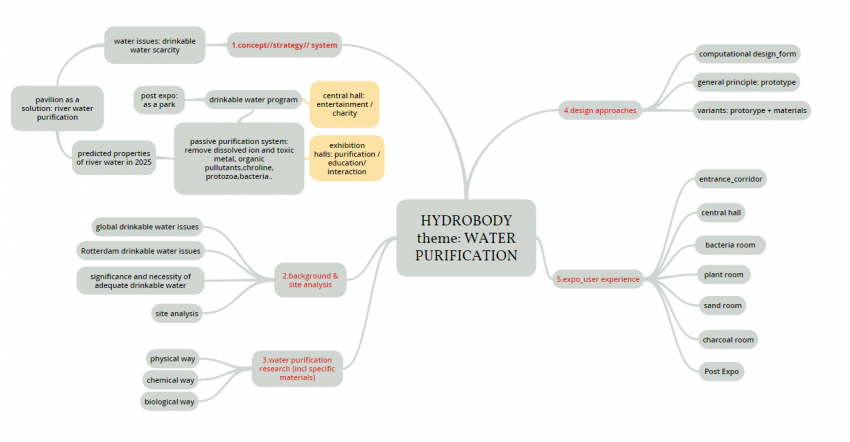
Serban Bodea